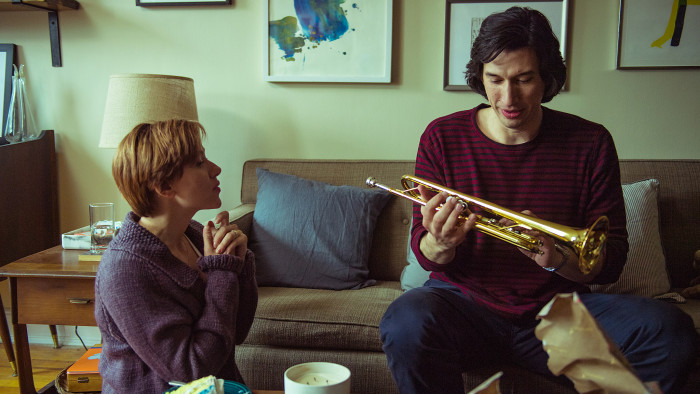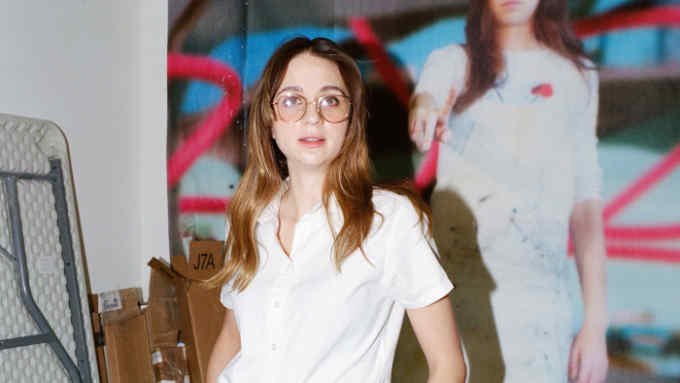Avery Singer: the artist breathing fresh life into painting

Roula Khalaf, Editor of the FT, selects her favourite stories in this weekly newsletter.
Very few artists are as hot as Avery Singer right now. The New York-based millennial, born in 1987, has already had solo exhibitions in the Hammer Museum in Los Angeles, Vienna’s Secession and, most recently, the Museum Ludwig in Cologne. Last year, she was chosen by Ralph Rugoff to show in his prestigious May You Live in Interesting Times exhibition at the Venice Biennale. Buyers of Singer’s work range from private collectors such as Christian Boros and Anita Zabludowicz to institutions including New York’s Museum of Modern Art. In May 2018, a 2013 Singer work that was offered at Sotheby’s with an estimate of $80,000 to $120,000 sold for an impressive $600,000 ($735,000 with fees).
The artist has capitalised on the momentum. In December, she announced on Instagram that she had joined the mega-gallery Hauser & Wirth, in collaboration with her Berlin representative Kraupa-Tuskany Zeidler (having broken off from her New York gallery of three years, Gavin Brown). Now Hauser & Wirth rewards its latest charge — and the youngest artist in its stable — with a solo booth of new work at this year’s second edition of Frieze Los Angeles.
Exactly why Singer has hit the zeitgeist has its roots in her technique. She makes large-scale paintings — top of the art market’s pecking order — but in a contemporary context. Her work starts in a digital format, using architectural, automation and other modelling software (and an animation specialist) to create the backdrop. Singer then airbrushes layer upon layer of images using a computer-controlled printer that was designed to transfer logos on to trucks and aeroplanes.
These painstaking efforts create deep, geometric, sculptural works that broadly fall into two categories: those that are highly abstracted and look more computer-generated; and, as with the works shown in Venice, those that are more figurative and painterly — mash-ups that feel both hip and different.
Says Allan Schwartzman, co-founder of Art Agency, Partners advisory and chairman of Sotheby’s Fine Art division: “For years it seemed as though painting was slipping into production and professional averageness. And then comes Avery Singer. I find every new development in her work to be thought-provoking, visually compelling and a vital challenge to norms.”

Singer consciously toys with the boundaries she is pushing, she tells me when we speak on the phone. “Painting can suffer from nostalgia about art history — I don’t think like that,” she says, talking 10 to the dozen. “I would rather do something that is representative of the time we are in. If that challenges the idea of what a painting will be, then I consider it a success.”
She cites the German artist Charline von Heyl as an inspiration and, like von Heyl, also looks to the culture around her to capture her imagination. “I want to get into the heads of people younger than me, to be postmillennial,” she says. “I look at different Instagram influencers, at the music and the music scene, to try to understand it all.” She recently turned to Twitch, a video live-streaming platform for gamers, where she saw an advert for Daz 3D, a modelling software. This became the basis of some of the works coming to LA.
There are, rightly, concerns about artists who hit the moon too soon, and whose markets subsequently suffer. While some fear Singer may fall that way, most market participants reckon she has emerged as hard-boiled as they come. Says Schwartzmann: “She is very grounded, and clear on why she paints and what, which gives me great confidence.” Unlike other young artists who have fallen victim to too much market attention, too soon, he believes that Singer has staying power.

It helps that she grew up with parents who were both artists in their spare time. “Our home was basically half studio and half living area,” she explains. “I was always aware of how both my parents worked on their art, which was very different to each other. They each possessed an artistic integrity unique to their individual practices. It taught me integrity within my own.”
Her bohemian upbringing also gave her an early appreciation of art: she’s named after the American artist Milton Avery, while her younger brother is called Calder, after the sculptor.
“I’m lucky,” she says. “I knew from when I was 16 that I wanted to be an artist. Now, I focus on making strong work and try not to let other superficial demands dominate my attention.” If she’s referring to the noisy and insecure art market around her, she doesn't want to dwell on the topic. “I can be a bit of a control freak, but I have absolutely no control of the art market,” she says.

It is up to Hauser & Wirth, therefore, to manage her place in the rollercoaster system. Marc Payot, co-president of the gallery, says: “We normally wouldn’t take on an artist who is so young — it can be detrimental when the demands are so heavy. I don’t know how it will play out, it’s a brand new relationship. But she is fearless and radical and her work is so mature.”
Plus, he says, “Our priorities are clear and the same, namely to put her in institutions and private collections with the right context.” The gallery also has a show of her work in the pipeline at its New York space next year.
Noah Baumbach on Marriage Story

Listen to the film-maker discuss love, divorce — and how Netflix is changing movies in the new episode of our Culture Call podcast. Plus: the FT’s film critic on everything you need to know about this year’s Academy Awards
Meanwhile, Singer’s 21st-century attitude to boundaries means that she doesn’t suffer concerns about where an art-fair showing fits into the hierarchy of exhibitions. She will be joining the LA fray with her brother in tow, and seems very excited.
“Art fairs are super-well-attended: there are so many people coming through the door in just three days,” she says. “It is a joy and a privilege to exhibit my work, so I’m happy to do so in any variety of ways.”
Follow @FTLifeArts on Twitter to find out about our latest stories first. Listen to our culture podcast, Culture Call, where editors Gris and Lilah dig into the trends shaping life in the 2020s, interview the people breaking new ground and bring you behind the scenes of FT Life & Arts journalism. Subscribe on Apple, Spotify, or wherever you listen.

Comments